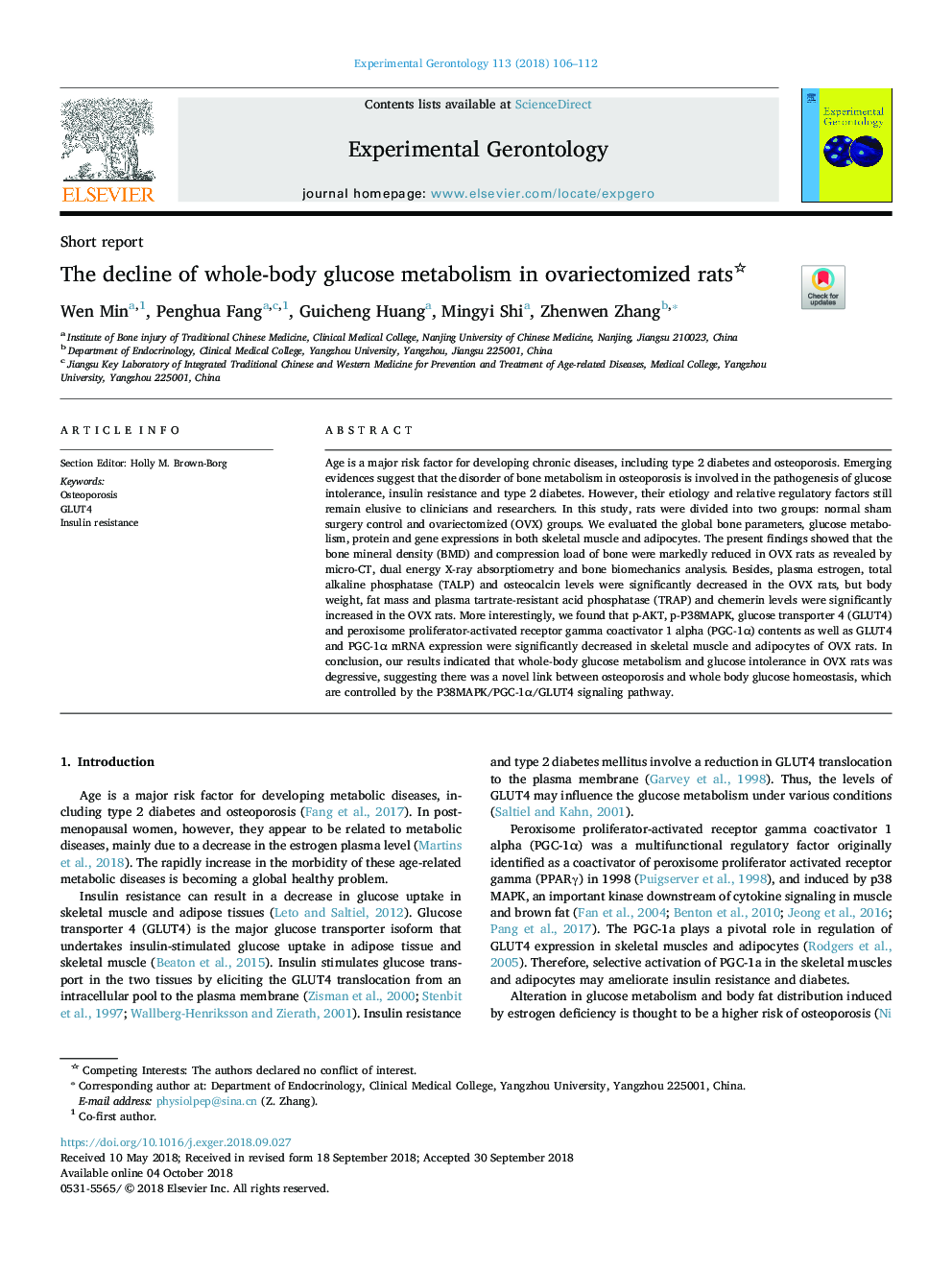| Article ID | Journal | Published Year | Pages | File Type |
|---|---|---|---|---|
| 11026210 | Experimental Gerontology | 2018 | 7 Pages |
Abstract
Age is a major risk factor for developing chronic diseases, including type 2 diabetes and osteoporosis. Emerging evidences suggest that the disorder of bone metabolism in osteoporosis is involved in the pathogenesis of glucose intolerance, insulin resistance and type 2 diabetes. However, their etiology and relative regulatory factors still remain elusive to clinicians and researchers. In this study, rats were divided into two groups: normal sham surgery control and ovariectomized (OVX) groups. We evaluated the global bone parameters, glucose metabolism, protein and gene expressions in both skeletal muscle and adipocytes. The present findings showed that the bone mineral density (BMD) and compression load of bone were markedly reduced in OVX rats as revealed by micro-CT, dual energy X-ray absorptiometry and bone biomechanics analysis. Besides, plasma estrogen, total alkaline phosphatase (TALP) and osteocalcin levels were significantly decreased in the OVX rats, but body weight, fat mass and plasma tartrate-resistant acid phosphatase (TRAP) and chemerin levels were significantly increased in the OVX rats. More interestingly, we found that p-AKT, p-P38MAPK, glucose transporter 4 (GLUT4) and peroxisome proliferator-activated receptor gamma coactivator 1 alpha (PGC-1α) contents as well as GLUT4 and PGC-1α mRNA expression were significantly decreased in skeletal muscle and adipocytes of OVX rats. In conclusion, our results indicated that whole-body glucose metabolism and glucose intolerance in OVX rats was degressive, suggesting there was a novel link between osteoporosis and whole body glucose homeostasis, which are controlled by the P38MAPK/PGC-1α/GLUT4 signaling pathway.
Keywords
Related Topics
Life Sciences
Biochemistry, Genetics and Molecular Biology
Ageing
Authors
Wen Min, Penghua Fang, Guicheng Huang, Mingyi Shi, Zhenwen Zhang,
